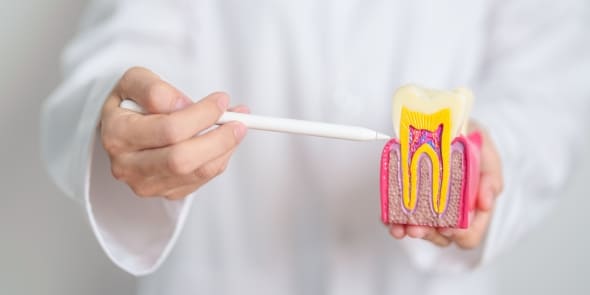How to Care for Your Tooth After a Root Canal in Austin
Experiencing a root canal can be daunting, but proper aftercare is essential for recovery. Knowing how to care for your tooth after your root canal in Austin can significantly influence the healing process. This guide offers practical tips and insights to ensure a smooth and successful recovery.
Understanding the Root Canal Procedure
A root canal is necessary when the inner pulp of a tooth becomes infected or damaged. During the procedure, the dentist removes the infected pulp, cleans the interior, and seals the tooth. This treatment alleviates pain and prevents further infection, allowing the tooth to remain functional.
Key Steps in the Procedure:
- Consultation and Diagnosis: Your dentist will evaluate the tooth and may take X-rays.
- Anesthesia Administration: Local anesthesia numbs the area, ensuring comfort during the procedure.
- Pulp Removal: The infected pulp is carefully extracted.
- Cleaning and Shaping: The tooth’s interior is cleaned and shaped to prepare it for filling.
- Filling and Sealing: The dentist fills the tooth with a biocompatible material and seals it to prevent future issues.
Understanding this process helps patients appreciate the importance of aftercare for a successful recovery.
Immediate Aftercare Steps
After your root canal in Austin, you may experience some discomfort. Here are immediate care steps to follow:
- Rest: Take it easy for the first few days. Your body needs energy to heal.
- Manage Discomfort: Over-the-counter pain relievers, like ibuprofen, can help manage pain and swelling.
- Follow Instructions: Adhere to any specific instructions given by your dentist.
These initial steps lay the foundation for a smooth recovery.
Oral Hygiene Practices
Maintaining good oral hygiene is crucial after a root canal. Here are effective practices:
- Gentle Brushing: Use a soft-bristled toothbrush and be gentle around the treated area.
- Carefully: Floss daily, but avoid pulling too hard around the treated tooth.
- Rinse with Salt Water: A warm saltwater rinse can help reduce swelling and promote healing.
Good hygiene prevents further complications and keeps your mouth healthy.
Diet Considerations
Your diet plays a significant role in recovery. Here are some dietary tips:
- Soft Foods: Consume soft foods, like yogurt and applesauce, for the first few days.
- Avoid Hard or Chewy Foods: Steer clear of hard foods that could damage your tooth.
- Stay Hydrated: Drink plenty of water, but avoid extremely hot or cold beverages for the first few days.
A proper diet ensures your body receives the nutrients needed for healing.
Monitoring for Complications
While most recoveries are smooth, being aware of potential complications is essential. Keep an eye out for these signs:
- Persistent Pain: If pain persists beyond a few days, contact your dentist.
- Swelling: Swelling that worsens instead of improving may indicate an issue.
- Discoloration: Any unusual discoloration in the area should be addressed.
Being proactive about these symptoms can prevent further complications and improve recovery.
Follow-Up Appointments
Scheduling follow-up appointments with your dentist is vital. During these visits, your dentist will:
- Assess Healing: Check how well the tooth is healing.
- Address Concerns: Answer any questions and resolve concerns.
- Plan Further Treatment: Discuss additional treatments, like crowns or restorations.
Regular check-ups help ensure everything is on track and your tooth remains healthy.
Long-Term Care for Your Tooth
Taking care of your tooth after a root canal doesn’t end with the initial recovery. Here’s how to maintain your tooth long-term:
- Regular Dental Visits: Schedule regular check-ups every six months.
- Maintain Oral Hygiene: Continue practicing good oral hygiene to prevent future issues.
- Avoid Teeth Grinding: Discuss treatment options with your dentist if you grind your teeth.
These long-term practices will help keep your tooth healthy for years to come.
Caring for your tooth after a root canal in Austin is crucial for a successful recovery. Following these tips, monitoring your condition, and maintaining regular dental visits ensure your tooth remains healthy and functional. Remember, don’t hesitate to contact your dentist if you have any concerns during your recovery. Your proactive approach to aftercare will make all the difference in your healing journey.


